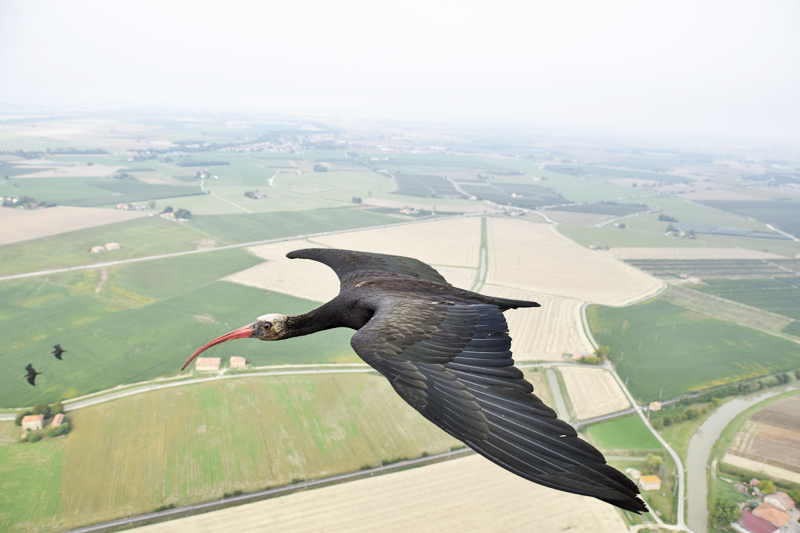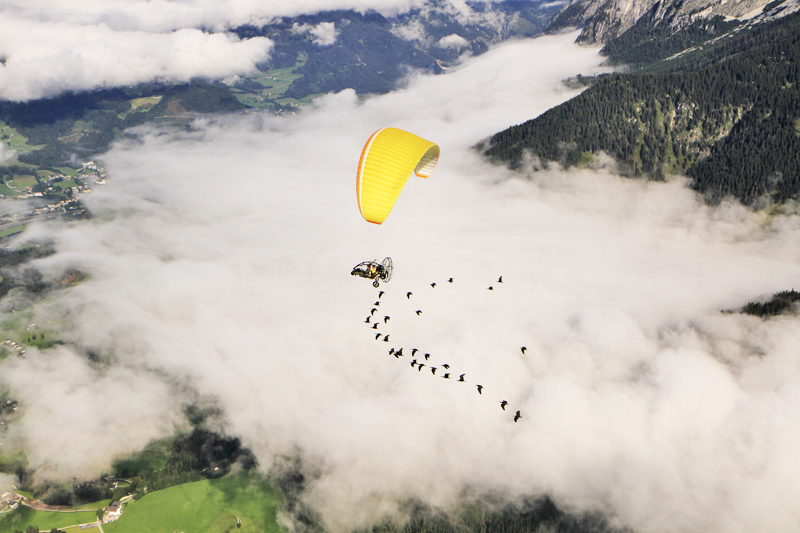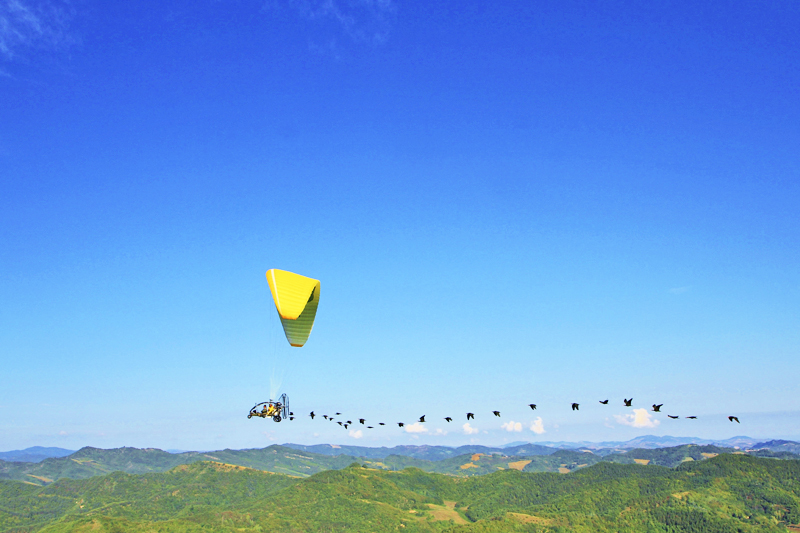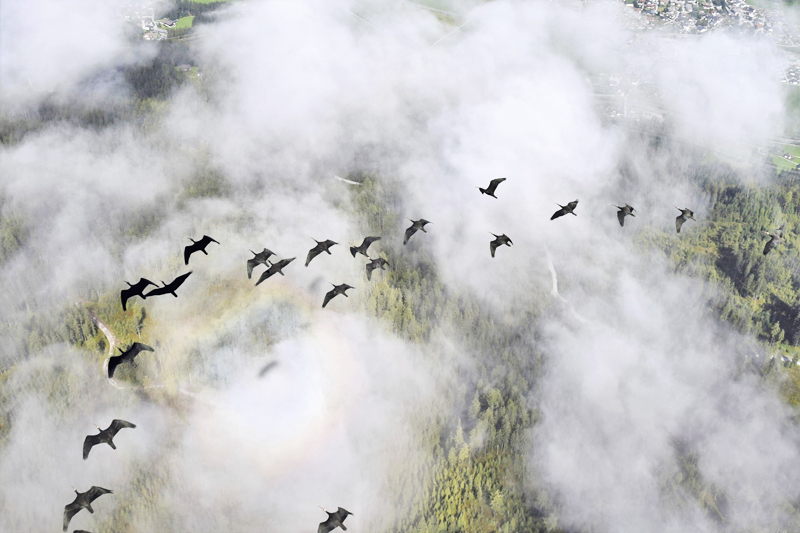PATERZELL, GERMANY – Bird species northern bald ibis or the northern bald ibis, which was almost extinct in Europe due to hunting in the 17th century, has now been successfully restored through breeding and habitat restoration efforts in the past two decades.
However, the bird – known for its shiny black and green plumage, red bald head, and long, curved beak – naturally does not know the right direction to migrate without guidance from an older bird born in the wild. Therefore, a group of scientists and conservationists acted as foster parents and flight trainers to help the birds.
“We need to teach the birds migration routes,” said biologist Johannes Fritz.
The northern bald ibis used to fly freely in North Africa, the Arabian Peninsula and much of Europe, including Bavaria in southern Germany. However, the migratory bird species is also considered a delicacy, known as Waldrapp in German caused its population to disappear from Europe, although a few small colonies survived elsewhere.
Since the project of Fritz and the conservation team Waldrappteam from Austria began in 2002, the population of the bird in central Europe has increased from zero to almost 300 individuals.





The effort has moved the species from ‘critically endangered’ to ‘threatened’ and is the first attempt to reintroduce an extinct migratory bird species on the continent.
Although the northern bald ibis still exhibits a natural instinct to migrate, it does not know which way to fly without the guidance of older wild-born birds.
Waldrappteam’s initial attempts failed because without teaching the birds migration routes, most disappeared soon after being released.
The birds, which were supposed to fly to winter areas like Tuscany, Italy, but flew in different directions and eventually died.
As a solution, the Waldrappteam team acted as ‘parents’ and ‘flight trainers’ for the northern bald ibis population in central Europe, which consists of the offspring of birds from various zoos released into the wild in the hope of forming a flock of migratory birds. This year, it is the 17th human-led migration and the second time the birds have been forced to reroute a new route to Spain due to climate change.
In preparation for the trip, the chicks are taken from the breeding colony a few days after hatching. They are placed in bird cages and raised by human foster parents, hoping to gain the trust that will allow the birds to follow a set migration route.
Barbara Steininger, one of the foster mothers of the Waldrappteam, considers herself the ‘mother bird’ of the northern bald-tailed ibis.
“We feed him, clean the nest and keep the bird healthy. We also interacted with him,” he said.
In one incredible sight, the foster parents sat in the back of the light plane, waving and cheering through loudspeakers as they flew through the air.
The plane looks like go-karts flies with a big propeller on the back and a yellow parachute that keeps it stable in the air. However, 36 birds followed the plane, piloted by Fritz, flying over alpine meadows and hillsides.
Fritz, inspired by Father Goose by Bill Lishman, a writer who taught Canada geese to fly with light aircraft in 1988. He later guided the endangered American crane through a safe route and founded a non-profit organization, Operation Migration. Lishman’s efforts became the inspiration for the 1996 film, Fly Away Homewhich features a young girl as a ‘mother goose’.
Like Lishman, Fritz and his team’s efforts have successfully taught the northern bald ibis its migration routes. In 2011, the first birds successfully migrated back from Tuscany to Bavaria and more birds now follow a route of more than 550 kilometers (km) each year and the team hopes the population in central Europe will reach more than 350 birds by 2028 and become a population who can be independent.
However, the effects of climate change mean that the northern bald ibis now migrates later in the season, forced to cross the Alps in colder and more dangerous weather, without the help of warm air currents known as thermalswhich helps the birds fly without using extra energy.
In response, Waldrappteam attempted a new route in 2023, from Bavaria to Andalusia in southern Spain.
This year, the travel route is approximately 2,800km, approximately 300km longer than last year’s route. Last month, from the airfield in Paterzell, in Bavaria, the team guided 36 birds along the journey under clear blue skies and a brisk wind.
The entire trip to Spain can take up to 50 days and is expected to end in early October. But Fritz said the effort is about more than just helping the northern bald ibis—it’s about paving the way for other endangered migratory bird species to fly. – AP
